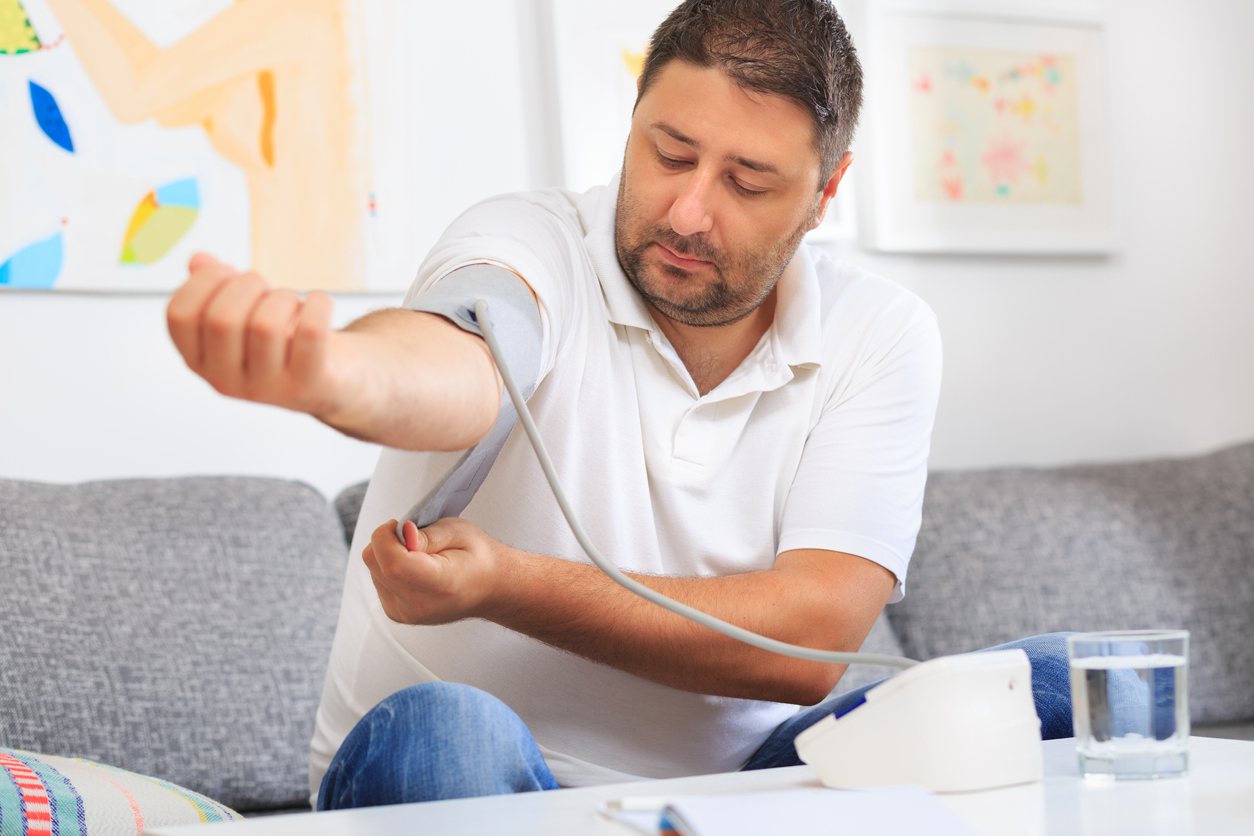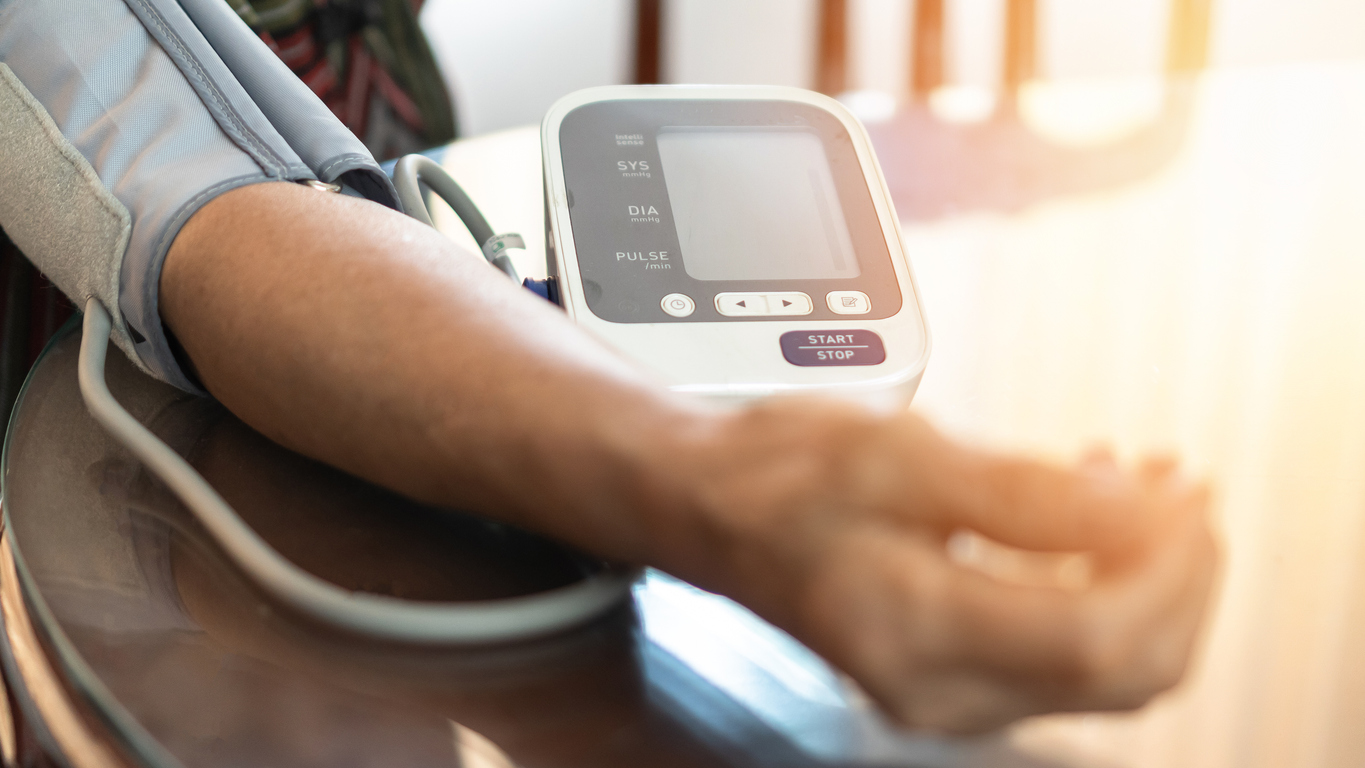What is blood pressure?
Blood pressure is the force of your blood pushing against the walls of your arteries. Arteries carry blood from your heart to other parts of your body.
Blood pressure is measured with two key values:
-
-
- Systolic blood pressure (“the top number”) – the pressure created when your heart contracts and pushes out blood
- Diastolic blood pressure (“the bottom number”) – the pressure created when your heart rests between heartbeats and fills with blood
-
Blood pressure is typically read as systolic “over” diastolic.
For example, when someone says, “My blood pressure is 120 over 70,” it means his or her systolic blood pressure is 120mm Hg and the corresponding diastolic blood pressure is 70mm Hg. The metric “mm Hg” indicates millimeters of mercury, which is the standard measurement for blood pressure.
Why is it important to know your blood pressure?
It’s important to get your blood pressure measured regularly in order to reduce the likelihood of developing hypertension, AKA high blood pressure.
Hypertension puts excess stress on your heart and arteries. Over time, this tension can damage the artery walls or generate a build-up of plaque, which can limit blood flow to vital organs such as the heart, brain and kidneys. This condition can ultimately cause a heart attack or stroke.
SteadyMD Dr. Dani Urcuyo recommends annual blood pressure checks.

“High blood pressure can be present for many years before folks feel the effects. Once symptoms appear, significant damage can already be done. It’s a good idea to check your blood pressure annually so that you and your doctor can intervene early and avoid future problems.”
Which home blood pressure monitor should you get?
A home blood pressure monitor makes taking your blood pressure easy and convenient. They are readily available at pharmacies like CVS and Rite Aid, as well as home goods stores like Target. The American Heart Association recommends an automatic, cuff-style, bicep monitor. When you choose a home monitor, make sure it is a good quality, properly calibrated and validated instrument.
If you’re unsure which blood pressure monitor is best for you, ask your primary care doctor for advice. As a SteadyMD member, you can simply text this question to your personal doctor (who already knows your health concerns and blood pressure history) and receive a prompt response.

How to measure your own blood pressure, as recommended by the American Heart Association:
- Be still. Don’t smoke, exercise, or drink caffeinated beverages or alcohol within 30 minutes of measurement.
- Relax. Sit calmly in a chair for at least 5 minutes with your left arm resting comfortably on a flat surface at heart level. Sit with your feet flat on the floor, and your back straight and supported.
- Measure. Place the bottom of the blood pressure cuff above the bend of the elbow.
- Take multiple readings. Take at least two blood pressure readings, each one minute apart. Do this once in the morning (before taking medications, if applicable) and once again in the evening before dinner.
- Record. Keep records of your results. The American Heart Association offers a free downloadable blood pressure log here. Share your results with your primary care physician. With SteadyMD, you can send your measurements instantly to your personal doctor through the SteadyMD app.
_______________________
What are the ranges for normal and abnormal blood pressure levels?
For optimal health, you want your blood pressure to have a systolic value less than 120 mm HG, and a diastolic value less than 80 mm Hg. In other words, you want your blood pressure to measure lower than “120 over 80.”
Here are the ranges of blood pressure as indicated by the American Heart Association:
When should you contact a doctor?
If your blood pressure measurement falls in the “elevated,” “high” or “hypertensive” ranges, you should let your primary care physician know. Your doctor may deem it worthwhile to run some tests, or may offer advice on how to lower your blood pressure.
_______________________
Why does your doctor want to know your blood pressure?
Blood pressure is one of the simplest, most telling indications of someone’s overall health. Essentially, your blood pressure is a snapshot of your wellness. At SteadyMD, we make it simple to transfer info about your vitals directly to your personal doctor.
_______________________
SteadyMD believes in a patient-doctor relationship that is:
- Convenient. Text, call or video chat your personal doctor anytime
- Customized. A doctor aligned with your life, specifically matched to you based on your needs, lifestyle and goals
- Built for long–term health and wellness. Guided by a preventative care approach that’s focused on longevity in health and wellness, not just reactionary medicine for sudden illness
- Focused on the patient. Doctors have a limited number of patients so they can devote more time and energy to each
- Secure. HIPAA-compliant. Secure text, call & video interfaces
_______________________
Through the touch of a button on your phone, you can get started today with a personal, online doctor — one who can help you regularly keep track of your blood pressure and provide guidance on how to optimize your long-term health.
Take the SteadyMD quiz to see which doctor would be your match! Or to learn more, send us an email at [email protected].

